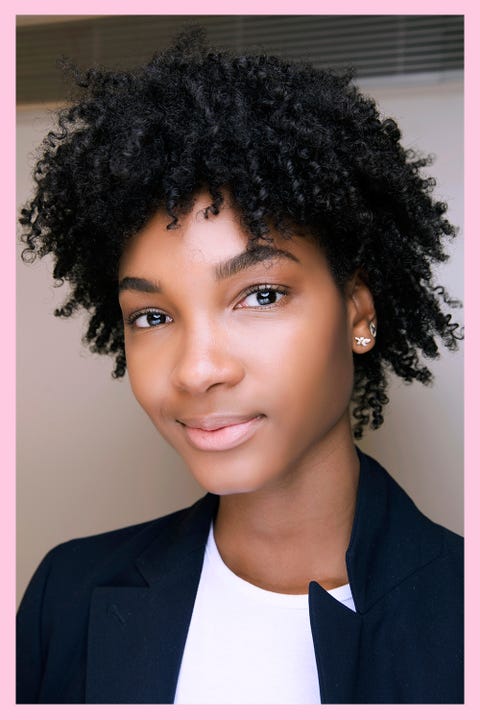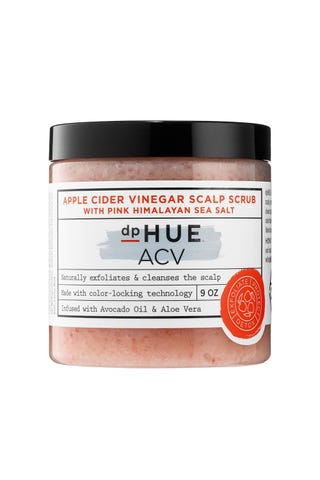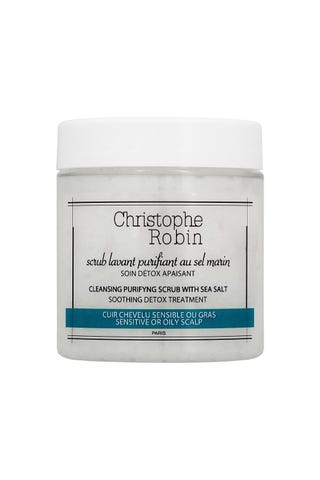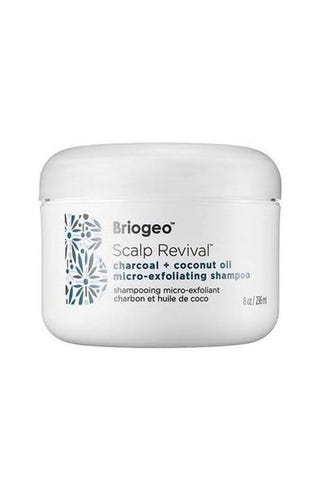How To Get Flakes Out Of Hair
As much as I try to ~accept my body~ for what it is, there's one thing I just can't get on board with: the massive amount of dandruff that sits on my scalp 24/7. And I'm not the only one dealing with it either, since a whopping 50 million Americans have dandruff (it's nuts, I know).
Unfortunately, dandruff can mean much more than a few pesky white flakes on your scalp—sometimes it can lead to itchy, red patches that scab and even bleed. But no matter how much you're suffering, you've still got options. That's why I spoke with hair expert David Kingsley, PhD, who has specialized in hair and scalp problems for more than 35 years, to figure out the easiest ways to get rid of dandruff for good (or, like, at the very least, lessen the symptoms).
This content is imported from {embed-name}. You may be able to find the same content in another format, or you may be able to find more information, at their web site.
What exactly is dandruff?

Imaxtree
Dandruff is caused by a yeast on your scalp called malassezia, and while it kiiinda sounds gross, it's actually on all scalps (with and without dandruff). Not everyone's scalp responds to malassezia the same though, which is why some people have dandruff and others don't. The biggest misconception surrounding dandruff is that it's caused by dryness (aka dry scalp, another common condition that looks—and sometimes feels—pretty similar to dandruff). " People think dandruff is triggered by dry skin, but it's actually due to excess oil on your scalp ," says Kingsley. In general, the more oily your scalp is, the more your malassezia yeast multiplies, which can eventually cause dandruff.
Can dandruff run in the family?
Yes and no. While there is a genetic link to dandruff, Kingsley says it's not definitive—you can very easily be the only person in your family who has dandruff. That's because there's a variety of internal factors that can cause dandruff and/or make it worse (like your menstrual cycle and stress) as well as external factors (like cold, dry weather, and infrequent cleansing). Even the foods you eat (like chocolate or cheese, says Kingsley) can trigger dandruff if you're already prone to it.
How do I get rid of dandruff fast?

Imaxtree
⇝ 1. FIGURE OUT WHAT IT IS
Before you can effectively treat what's happening on your scalp, you need to know what you're dealing with. And to make it all the more confusing, there are technically three types of dandruff:
» Psoriasis (large, itchy, red scales that are usually also seen on your elbows, knees, and other areas of your body). If you think you have psoriasis, make sure you head to your doctor for an evaluation—psoriasis won't respond to regular dandruff shampoos or treatments, so you'll need to chat with a derm who can prescribe medications that can help.
» Dry scalp (little white flakes that easily come off your hair and scalp without sticking). " Dry-scalp flakes are usually quite small and noticeably dry ," says trichologist Dominic Burg, chief scientist at Evolis Professional. If you're dealing with dry scalp, try using a scalp-oil treatment for a few weeks before you shower, followed by a soothing scalp serum. If your dandruff only gets significantly worse or shows zero signs of improvement, you're likely dealing with...
» Seborrheic dermatitis (yellowish sticky flakes that are often—but not always—seen with a red, oily scalp. This type is considered the classic type of dandruff and is affected by your scalp's yeast production). "Dandruff can often appear oily, and it sheds as larger flakes that are usually clumped together," says Burg. To get rid of your dandruff, try using an anti-dandruff shampoo every time you wash your hair—then as your symptoms lessen, swap it out for your regular shampoo once or twice a week.
The dandruff-fighting formula you use is super important here, since not all ingredients will work the same. Consider zinc pyrithione and ketoconazole the two holy-grail ingredients for dandruff treatments, both of which work to kill the extra yeast and fungus on your scalp (and the cute little flakes that come with it). For a lighter approach (or when your symptoms have calmed down), try a shampoo with salicylic acid, which gently exfoliates your scalp and soothes any redness or irritation. A few of my favorite options, below:

Neutrogena T/Gel Therapeutic Shampoo Extra Strength

Leonor Greyl Gentle Anti-Dandruff Shampoo

Head & Shoulders Instant Oil Control Daily Shampoo
amazon.com

Phyto Phytheol Anti-Dandruff Purifying Shampoo
Just know that not all products will work the same for everyone—but try sticking to one formula for at least 28 days (aka a full skin cycle) to see if it's a good fit before you nix it. If the shampoo you're using is working, Kinglsey says you'll likely start to see results within a couple weeks.
⇝ 2. LOCATE THE CAUSE
If you're experiencing dandruff for the first time, Kingsley suggests locating a cause. Keep track of what you're eating, note any stressful events, and be aware of big changes in your environment . "Look at those possible triggers first, and if there's something obvious that sticks out, work on it," he says. Keep in mind, though, that even if you figure out what's causing or making your dandruff worse, there's no guarantee your fix will be permanent. "Once you get dandruff, it doesn't necessarily mean it's going to go away immediately or never come back," says Kingsley.
This content is imported from {embed-name}. You may be able to find the same content in another format, or you may be able to find more information, at their web site.
⇝ 3. TRY A SCALP SCRUB
It's no secret that product buildup does not get along with dandruff (double the white flakes? uh, no, thank you). Try using a scalp scrub once a week to combat leftover product (think: dry shampoo, hair spray, the works) and excess oil. Remember that scalp scrubs should be used super gently—massage the formula with your fingertips (not your nails) and rinse it out entirely before you shampoo and condition.

DpHue Apple Cider Vinegar Scalp Scrub Treatment

Christophe Robin Cleansing Purifying Scrub with Sea Salt

Kristin Ess Instant Exfoliating Scalp Scrub

Briogeo Scalp Revival Charcoal + Coconut Oil Micro-Exfoliating Shampoo
⇝ 4. ASK A DOCTOR ABOUT STEROID CREAMS
Not noticing a difference in your dandruff after 30 days? First, don't be discouraged, because finding the right cocktail to zap your dandruff is hard. Second, you've still got options—and some good ones. Find a dermatologist or doctor who can assess your dandruff and walk you through next steps . You'll likely be given a topical steroid—like a cream or lotion—that can help soothe any irritation or redness on your scalp or a salicylic acid treatment to exfoliate your scalp and cancel out excess buildup.
Final Thoughts
I get it: Dandruff is an actual b*tch, but treating it doesn't have to be. Before you start on your dandruff-fighting journey, it's important to remember that there might not be a permanent fix—some people (and scalps) are just prone to it. "You can get rid of it and it may never come back, but the odds are that you might experience dandruff again at some point in time," says Kingsley. As long as you're keeping up with your anti-dandruff shampoo and scalp scrub, you should definitely notice a little—if not a lot of—relief.
Ruby Buddemeyer Ruby was the beauty editor at Cosmopolitan, where she covered beauty across print and digital.
Lauren Adhav Associate Fashion Editor I'm Cosmopolitan's Associate Fashion Editor and write about any and all trends, major celeb fashion moments, and why wide-leg jeans are basically the best.
This content is created and maintained by a third party, and imported onto this page to help users provide their email addresses. You may be able to find more information about this and similar content at piano.io
How To Get Flakes Out Of Hair
Source: https://www.cosmopolitan.com/style-beauty/beauty/a19636343/how-to-get-rid-of-dandruff/
Posted by: vargasanich1974.blogspot.com

0 Response to "How To Get Flakes Out Of Hair"
Post a Comment